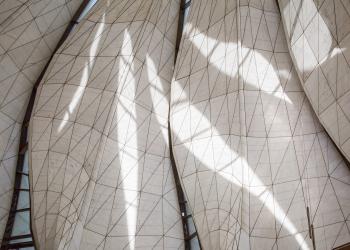How can peace mediation and local ownership mutually reinforce each other?
What it means for the EU to “facilitate locally owned peace agreements” is a central question in the context of the revision of the 2009 Concept on Strengthening EU Mediation and Dialogue Capacity.
On 16 June, the Bahá’í International Community (BIC) Brussels Office hosted a panel entitled “Peace Mediation and Local Ownership: How can one reinforce the other?” within the context of the European External Action Service’s annual Community of Practice (CoP) meeting dedicated to looking into the future of EU mediation practices.
“Humility is key and requires mediators to trust in the strength and capacity of local populations” said Naghmeh Sobhani, an international peacebuilding consultant for UNICEF, in her introductory remarks. “Such a perspective enables mediators to foster a collaborative framework of engagement in which local populations are viewed as protagonists of their own peace process. This assumption also implies that every culture has the potential to explore, learn about and develop its own societal framework for fostering and sustaining peace. Another fundamental aspect of this framework of engagement is that it needs to be inclusive and overcome socially polarizing assumptions about ‘us’ and ‘them’.”
Claudia Maffettone, Program Manager for Track II Mediation at Search for Common Ground, highlighted the essential role of youth in creating local ownership. “For too long have youth been seen as either perpetrators or victims of violence, when they are actually so much more in terms of their contribution and what they can do to support a peace process. Youth are able to stir hearts and minds towards a more inclusive type of process.” Another participant highlighted the power of imagination as a central aspect in peacebuilding and peace mediation. “Young people can better imagine a shared future that is achievable.” In order to be able to imagine such a shared future, “one needs to start with focusing on what unites different actors, but also on what it is that allows somebody to see themselves as part of the solution rather than the problem” added Rachel Bayani, representative of the BIC Brussels Office.
These and other insights that emerged from the participatory exchange were summarized and shared with the EEAS as a contribution towards the revision of the EU peace mediation concept.
